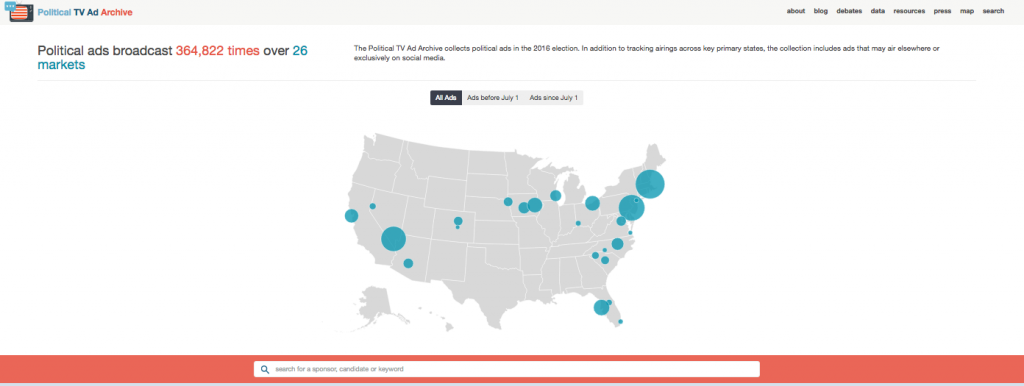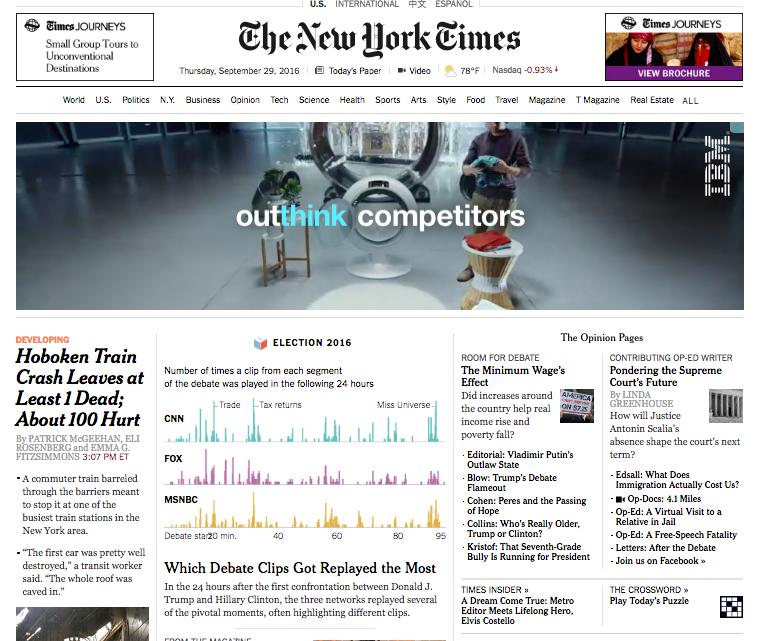Over the past extremely unpredictable election year, the Internet Archive invented new methods and tools to give journalists, researchers, and the public the power to access, scrutinize, share, and thoroughly fact-check political ads, presidential debates, and TV news broadcasts.
Our efforts were designed to help citizens better understand the patterns of political messages designed to persuade them and find factual, reliable information in what is disturbingly being seen as a “post-truth” world.
The Political TV Ad Archive project proved to be highly useful to our high-profile fact-checking partners, as well as reporters at an array of outlets including The New York Times, The Washington Post, FOX News, The Economist, The Atlantic, and more. By providing data about when, where, and how many times political ads aired on TV in key markets, the project unlocked new creative potential for data reporters to analyze how campaigns and outside groups were targeting messages to voters in different locations.
Breaking events, like political debates and speeches, also offered a chance for archived TV content to shine, allowing reporters to isolate and share clips in near-real time, and fact-checkers to harvest dubious statements for further exploration. In addition, the project’s experience with developing audio fingerprinting (through a new invention we call the Duplitron) for identifying instances of ads inspired a new use: tracking candidate debate sound bites in subsequent TV news shows.
In this way, reporters and researchers were able to analyze and report on which political statements were trending across different TV programs. This provided a way to show how political statements were trending across various networks, revealing the ideological, and agenda-setting and other editorial choices made by news producers about what issues to highlight and overlook.
As Roger Macdonald, director of the TV News Archive, wrote to project partners: “Citizens will increasingly hunger for sound information to inform wise electoral decisions. With our Republic being riven by increasing socio-political chaos and infectious divisions, whose magnitude has not been seen since before our Civil War, we think there are uncommon opportunities to serve citizens with the information for which they will increasingly yearn. We have an historic opportunity to thoughtfully place some grains of sand on the balance pan of reason.”
The project was supported by a generous grant from the Knight News Challenge, funded in partnership with the Knight Foundation, the Democracy Fund, the Hewlett Foundation and the Rita Allen Foundation, and received additional support from the Rita Allen Foundation, the Democracy Fund, PLCB Foundation, Craig Newmark, Christopher Buck, and others
Here is a quick look at project accomplishments:
Political TV Ad Archive
- Total number of archived ad views, most embedded in partner sites: 2,036,063
- Number of ads collected: 2,991
- Political ads broadcast 364,822 times over 26 markets
- Number of fact and source checks: 131
- Press coverage: 156 articles
Katie Donnelly is associate director at Dot Connectors Studio, a Philadelphia-based strategy firm that has worked with the Political TV Ad Archive.

